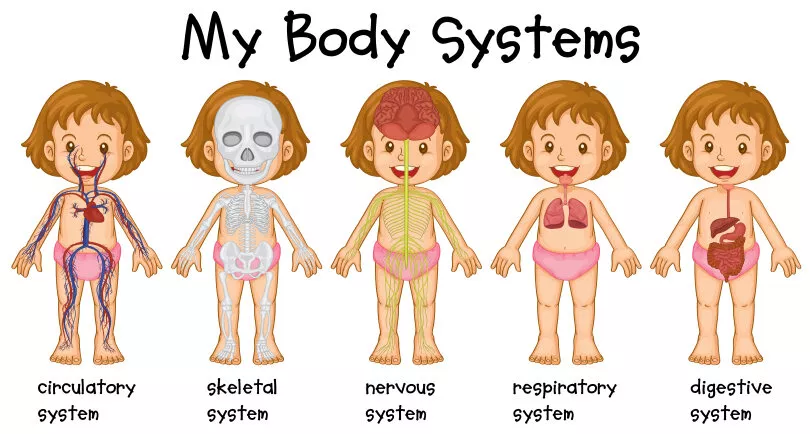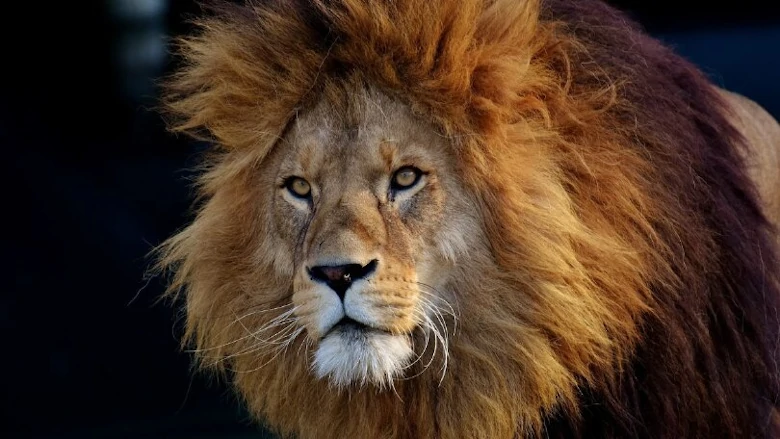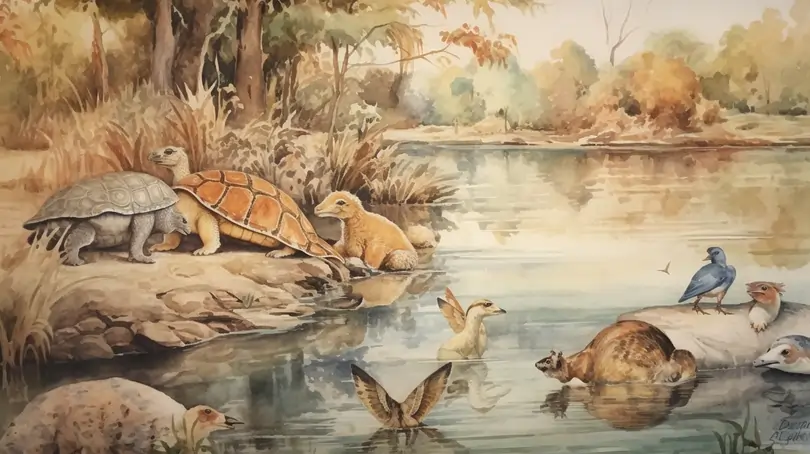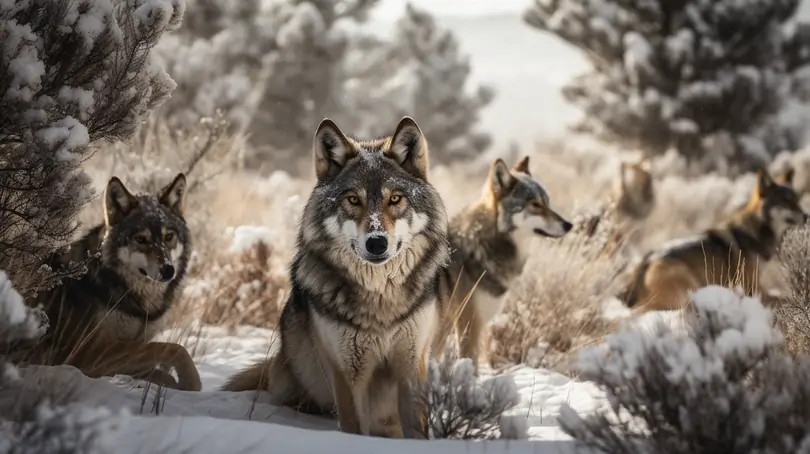Adaptations In Animals
In this article, you will be introduced to adaptations in animals based on the Singapore Primary 6 Science Syllabus. We will focus on the following two main aspects:
- Structural Adaptations
- Behavioural Adaptations
Adaptations
Adaptations are changes or modifications in the physical or behavioural characteristics of an organism that help it to better survive and thrive in its environment. Organisms that are adapted to the natural habitat can cope with physical factors of the environment such as temperature, are able to obtain air, food and water, protect themselves from predators and reproduce.
There are two main types of adaptations in animals: structural adaptations and behavioural adaptations. Structural adaptations are physical characteristics that help an animal to better survive in its environment. Behavioural adaptations are unique ways in which the animal behaves that help it to survive in its natural habitat.
Structural Adaptations
Structural adaptations refer to the specific physical features that help animals to survive in their environments. For example, a hummingbird has a long beak that can reach deep into a flower to extract nectar, while a tree lizard has a long tail that can be used for balancing as it moves across branches. Other animals have adaptations that help them to avoid predators, such as camouflage, speed, or the ability to blend into their surroundings.
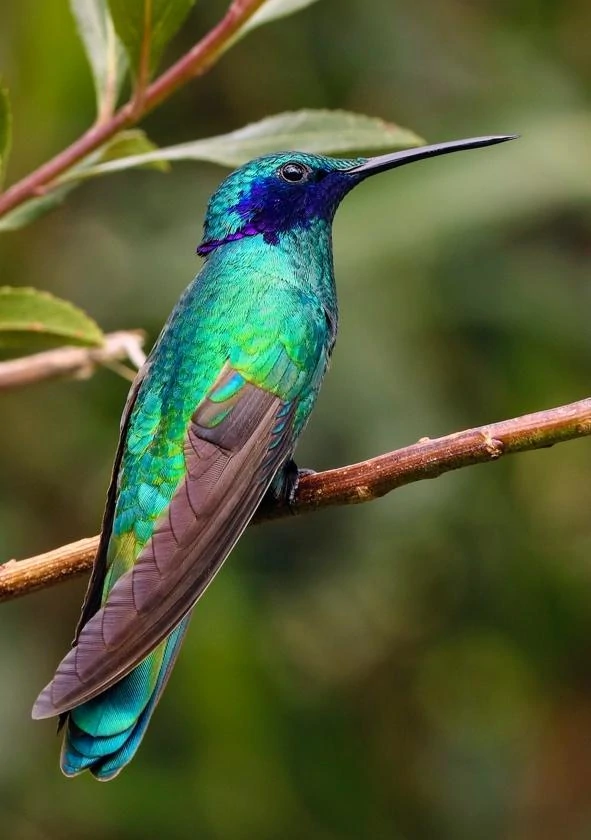
Image Credits: Chris Charles - Unsplash - Hummingbird with a long beak to reach deep into a flower

Image Credit: Thomas Lipke - Unsplash - Snowshoe hare blending into the snow-covered environment
One well-known example of a structural adaptation is the long neck of the giraffe. The giraffe's neck is much longer than that of any other mammal, allowing the giraffe to reach leaves and branches that other animals cannot. This adaptation is especially important in environments where food is scarce, as the giraffe is able to feed on vegetation that is out of reach of other animals.
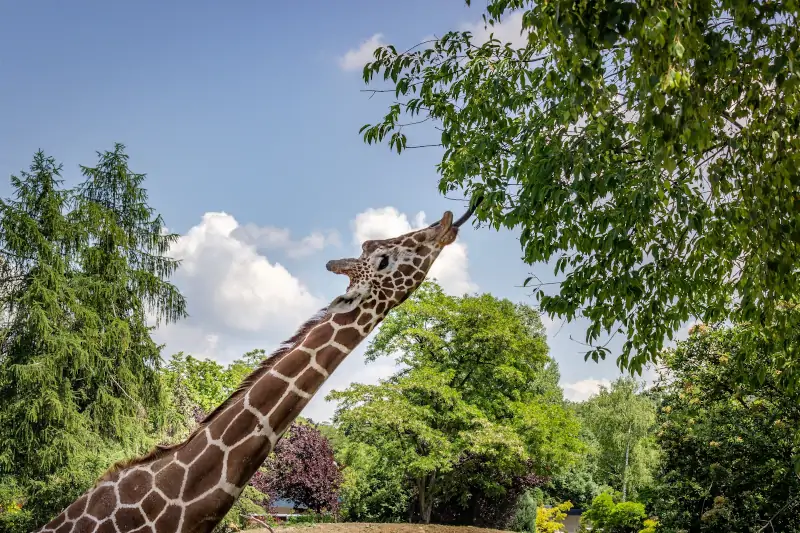
Image Credit: Slawek K - Unsplash – Giraffe feeding on the leaves on a tree
Another example of a structural adaptation is the webbed feet of ducks. The webbed feet provide the duck with more surface area to paddle. These feet are adapted for swimming and allow the duck to move more quickly and efficiently through the water to hunt for food or escape from predators.

Image Credit: K. Mitch Hodge - Unsplash - Duck with webbed feet that is adapted for swimming
Behavioural Adaptations
Behavioural adaptations in animals are changes in the way an animal behaves that help it to survive and thrive. For example, some animals migrate to warmer climates during the winter in order to avoid the cold weather. Others hibernate in order to conserve energy during the winter months. Some animals form groups in order to better protect themselves from predators.
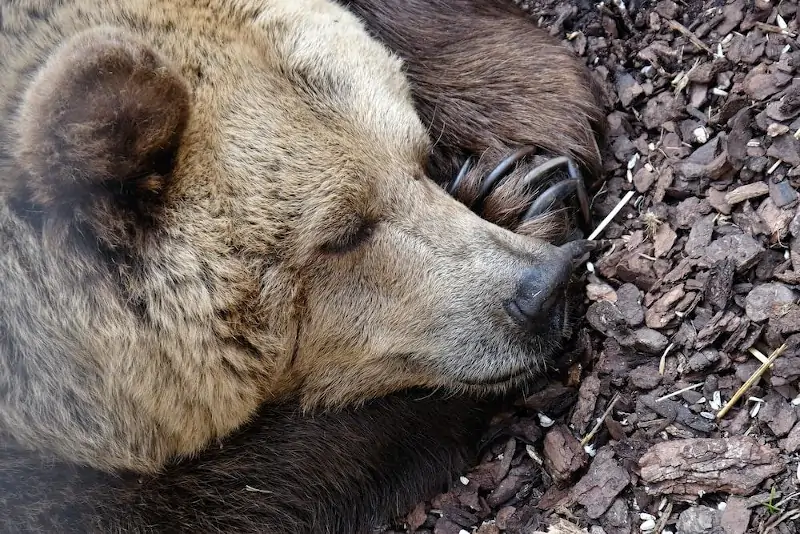
Image Credit: Daniele Levis Pelusi - Unsplash - Bear hibernating during winter
One example of a behavioural adaptation is the migration of birds. Many bird species migrate to warmer climates in the winter in order to avoid the cold weather. During migration, birds fly thousands of miles from their breeding grounds to their wintering grounds, often relying on the Earth's magnetic field to help them navigate. This behaviour helps the birds to survive by allowing them to access food and shelter during the winter months.

Image Credit: ryan skjervem - Unsplash - Birds migrating to warmer climates during winter
Another example of a behavioural adaptation is the social behaviour of some animals. For example, some species of primates form groups in order to better protect themselves from predators. In these groups, individual animals look out for one another, and the group as a whole is better able to defend itself against predators. This behaviour helps to increase the chances of survival for the individuals in the group.
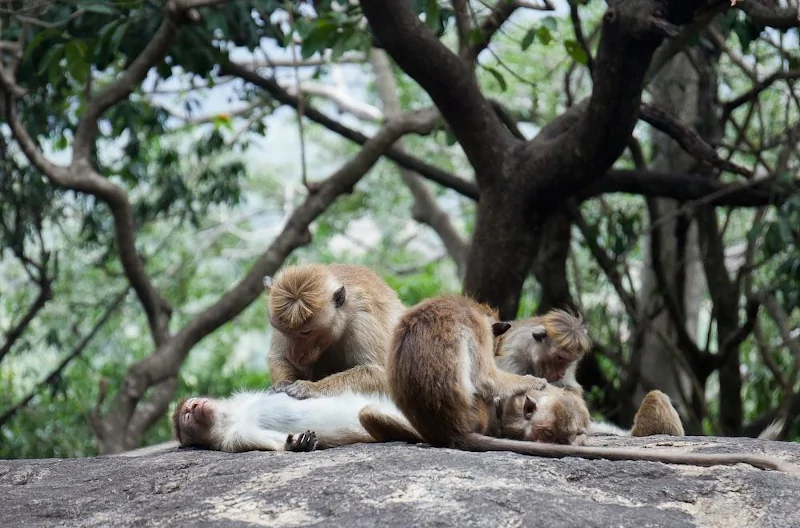
Image Credit: Adriano Mescia - Unsplash - Primates living in social groups
Conclusion
In conclusion, adaptations play a crucial role in the survival and success of animals in their environments. Structural adaptations and behavioural adaptations are both important and help animals to better survive and thrive in their environments. Understanding these adaptations is essential for Primary Six students in Singapore as they study the PSLE science syllabus, as it helps them to gain a deeper understanding of the way that animals interact with their environment.
Test Yourself
The diagram below shows a flower of a plant.

Which of the following birds would most likely feed on the nectar of the above flower?

Bird (4) has a long narrow beak that allows it to reach deep into the flower to extract nectar.
Fly F looks similar to bee X as shown below. Bee X can harm other animals by stinging them but fly F cannot.
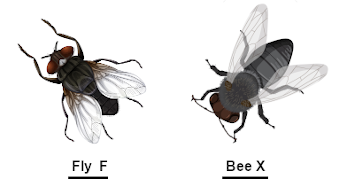
Which one of the following statements about this adaptation is correct?

Fly F looks like bee X so that it will trick predators into thinking that it is bee X which can sting the predator, thus predators are less likely to attack fly F.
Rahman filled four identical beakers with 100m of water each at 80oC. Each beaker was wrapped with materials made from different animal coverings. The materials were of the same size and thickness. The beakers were left in a room at 20oC for 30 minutes. The table below shows the temperature changes of the water in each beaker for each animal covering.

Based on the results observed for each animal covering, which animal is the best adapted to survive in a cold environment?
The water in the beaker covered with animal covering R has the highest temperature after 30 minutes, showing that animal covering R is the poorest conductor of heat and will allow animal R to lose heat from its body to the surrounding the slowest. Thus, animal R is best adapted to survive in a cold environment.
Siti was studying the frogs in the school eco-pond. Each day, she took down notes on the frogs. Which one of the following statements that Siti made in her notebook is not an adaptation of the frogs to increase their chances to continue their own kind?
I: Frogs lay many eggs each time.
II: Frogs lay eggs among the water plants.
III: Frog eggs are covered with a layer of bad-tasting jelly.
IV: Frogs lay eggs instead of giving birth to their young alive.
By laying many eggs, the chances of survival will increase.
By laying eggs among the plants, predators are less likely to find the eggs and eat them.
By having bad-tasting jelly around the eggs, predators are deterred from eating the eggs.
The diagram shows how a bird folds its wings before plunging into water to catch its prey.
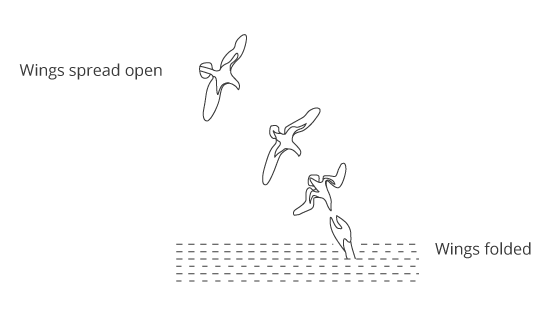
Which one of the following explains this behavioural adaptation?
I: To reduce its weight
II: To have a better aim of prey
III: To obtain a streamlined body shape
IV: To increase wing span for extra speed
Having a streamlined body shape reduces water resistance, enabling the bird to move faster in the water and increase its chances of catching the prey.




 SG
SG  VN
VN 

